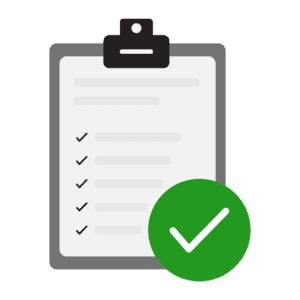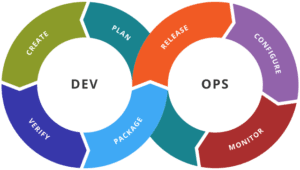AllCode employs a structured methodology to assist organizations in transitioning to DevOps. We have established a comprehensive process to evaluate the current state (as-is) of an organization, diagnose their processes, tools, and teams, and propose a future state (to-be) aimed at transforming how the company develops, tests, secures, and deploys its software.

Our assessment categorizes organizations into maturity levels (reactive, proactive, predictive) and stages (baseline, repeatable, consistent, managed, optimized) based on three key aspects: culture, process, and technology. This approach enables us to create a detailed action plan and roadmap, working closely with the organization to implement changes.
Internally, we have a framework tailored to different organizational sizes and complexities. For small teams, we designate a focal DevOps role within a pod. For larger organizations, we establish a dedicated DevOps Pod to centralize the needs of various teams. For complex and larger organizations, we form a DevOps chapter and communities to synchronize technologies and ideas effectively.
After completing the assessment, you can use the findings to develop a strategic plan for the transition to DevOps methodologies. Remember, the shift to DevOps is as much about culture and mindset as it is about tools and processes.
Part 1: Current Organizational Structure Evaluation

Organizational Hierarchy and Reporting Lines
- How is the current IT department structured?
- What are the reporting lines and communication channels?
Team Composition and Skills
- What are the current skill sets available within the teams?
- Are there dedicated teams for development, testing, and operations?
Project Management Approaches
What project management methodologies are currently in use (e.g., Waterfall, Agile)?
Tooling and Technologies
What tools are currently being used for version control, testing, deployment, and monitoring?
Collaboration and Communication
- How do teams currently collaborate and communicate?
- Are there any silos or barriers that hinder cross-functional collaboration?
Part 2: Risk Identification and Analysis
Cultural Risks
- Is there resistance to change within the organization?
- How is failure perceived and managed?
Process Risks
- Are there any rigid processes that could hinder the adoption of DevOps practices?
Technical Risks
- Are there legacy systems that may not align well with DevOps practices?
- Is there a lack of automation in testing and deployment?
Resource Risks
- Are there constraints on budget, time, or personnel that could impact the transition?
Part 3: Recommendations for DevOps Transition
Cultural Transformation
- Encourage a culture of collaboration, learning, and flexibility.
- Implement blame-free post-mortems to learn from failures.
Process Improvement
- Adopt Agile methodologies to enhance responsiveness and adaptability.
- Streamline processes to remove bottlenecks and enable continuous delivery.
Technical Enablement
- Invest in automation tools for testing, deployment, and monitoring.
- Upgrade or replace legacy systems that are incompatible with DevOps practices.
Resource Allocation
- Ensure adequate budget and time are allocated for training and tool acquisition.
- Consider hiring or developing in-house expertise in DevOps practices.
Part 4: Implementation Plan

Short-Term Goals
- Define clear, achievable goals for the initial phase of the transition.
- Start with small, pilot projects to demonstrate the value of DevOps.
Long-Term Strategy
- Develop a roadmap for full-scale implementation across the organization.
- Continuously measure and improve upon the DevOps practices adopted.
Training and Development
- Provide training sessions and workshops for existing staff.
- Create a knowledge-sharing platform to facilitate continuous learning.
1. Understand the Current State:
- Assessment: Begin by assessing the current organizational structure, culture, and processes. Understand pain points, inefficiencies, and areas for improvement.
- Stakeholder Interviews: Conduct interviews with department heads, employees, and key stakeholders to gather insights.
2. Define the Vision and Objectives:
- Strategic Alignment: Align organizational changes with the overall business strategy.
- Vision Statement: Create a clear vision statement that outlines the desired future state after the changes are implemented.
- Objectives: Define specific objectives for each department (Legal, Finance, HR, and Sales).
3. Develop a Change Management Plan:
- Change Champions: Identify change champions within each department. These individuals will drive the change and encourage others.
- Communication Plan: Develop a communication strategy to keep employees informed throughout the process.
- Training and Education: Provide training sessions to help employees adapt to new processes and tools.
4. Department-Specific Plans:
- Legal:
- Review legal processes and identify bottlenecks.
- Implement legal tech solutions for contract management, e-signatures, and compliance tracking.
- Finance:
- Streamline financial reporting and budgeting processes.
- Explore automation tools for expense management and financial analysis.
- HR:
- Revise performance appraisal systems.
- Implement an employee self-service portal for leave requests and benefits management.
- Sales:
- Optimize lead management and sales pipeline processes.
- Provide sales teams with better tools for customer relationship management (CRM).
5. Monitor and Adapt:
- KPIs and Metrics: Define key performance indicators (KPIs) to measure the success of organizational changes.
- Feedback Loop: Continuously gather feedback from employees and adjust the plans as needed.
- Celebrate Wins: Recognize and celebrate achievements along the way.



Recent Comments